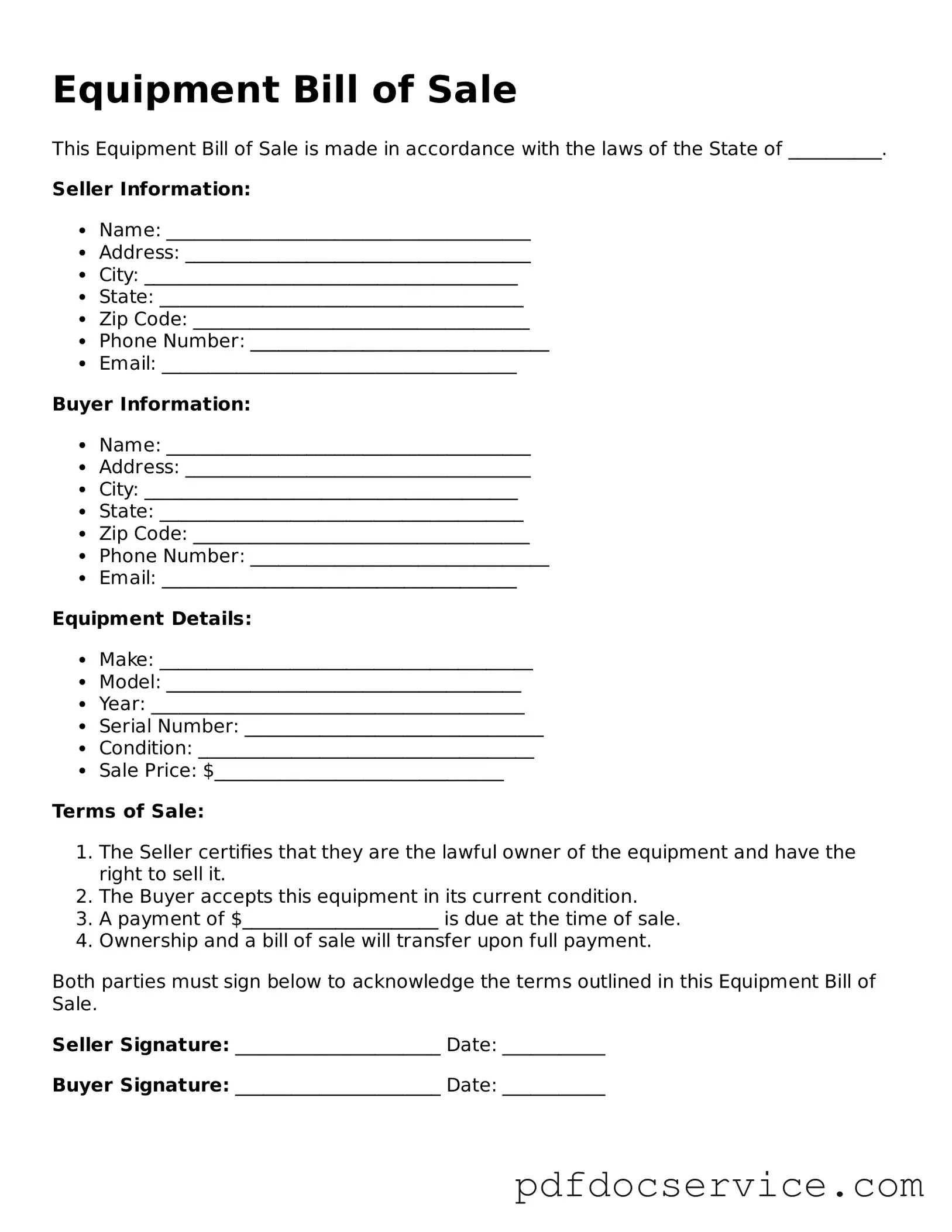Blank Equipment Bill of Sale Form
The Equipment Bill of Sale form is a legal document used to transfer ownership of equipment from one party to another. This form outlines essential details, such as the description of the equipment, the sale price, and the signatures of both the buyer and seller. Understanding this form is crucial for ensuring a smooth and legally binding transaction.
Open Equipment Bill of Sale Editor
